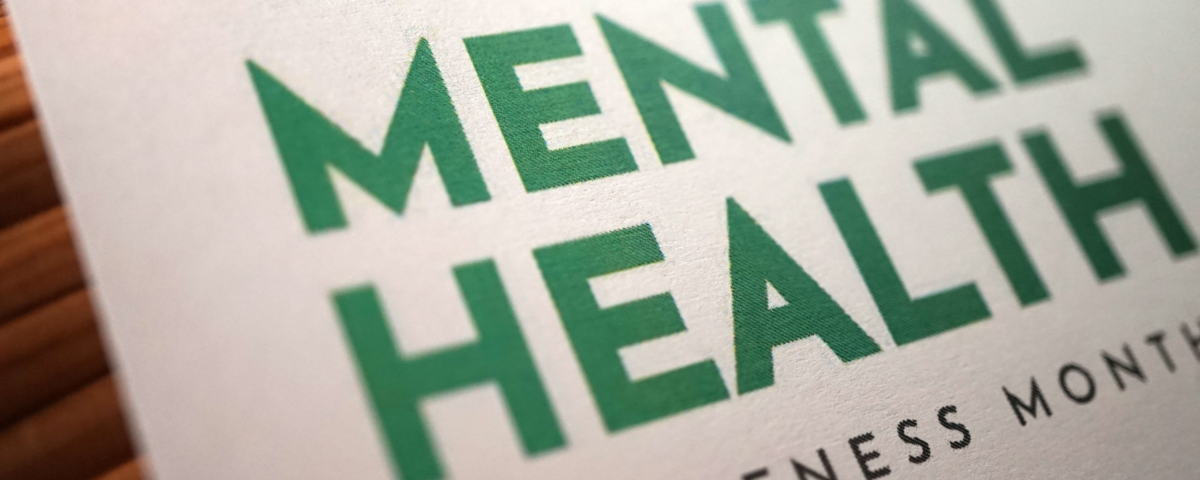
A Big Announcement in the Sample Industry
May 24, 2024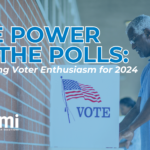
The Power of the Polls: Examining Voter Enthusiasm for 2024
May 29, 2024May is National Mental Health Awareness. As May comes to a close, we wanted to take one last dive into the statistics, trends, and narratives that spotlight the journey towards awareness, support, and advocacy in the realm of mental health. We asked individuals across the board “How has your understanding of mental health changed over the past few years?” This is what they shared…
Overall
In recent years, public perceptions regarding mental health have notably shifted, with 59% of individuals reporting an enhanced understanding. This improvement in understanding reflects a significant majority, indicating a growing awareness and acceptance around mental health issues. Conversely, 35% of people feel their understanding has stayed the same, suggesting a substantial portion of the population has not experienced a change in their perception or knowledge. Meanwhile, only a small fraction, 6%, report a decline in their understanding, pointing to an overwhelmingly positive trend towards greater awareness and education in mental health matters.
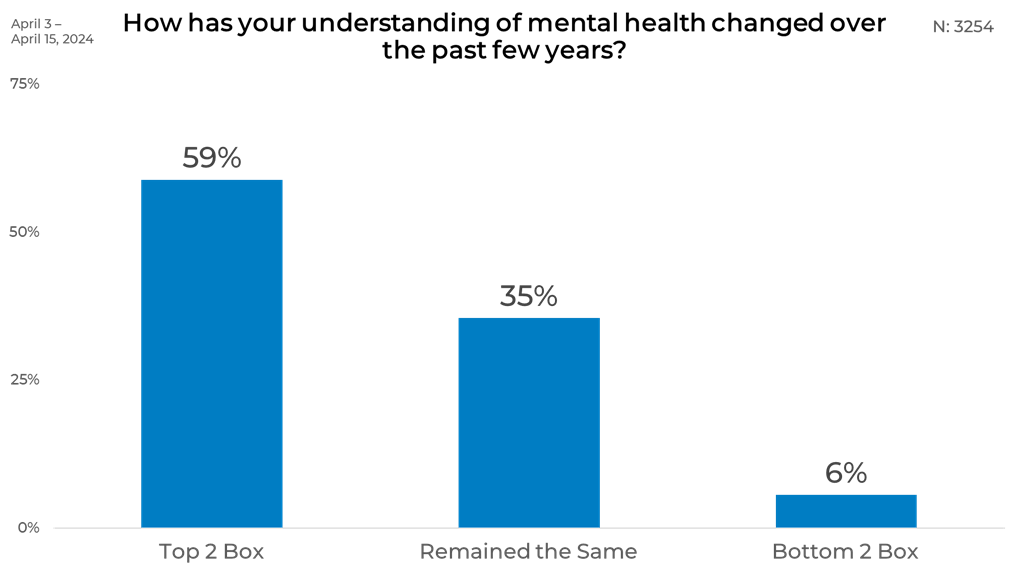
Age
It seems the old adage, “older and wiser” hasn’t exactly caught the memo on this data sample. The age-based breakdown of changes in mental health understanding reveals a clear trend: younger individuals report more significant improvements in their awareness. Specifically, 66% of those aged 18-24 and 64% of those aged 25-34 noted an enhanced understanding, compared to 63% in the 35-44 age group, 55% among those 45-64, and 51% for those 65 and older. This suggests that younger generations are either more exposed to or perhaps more receptive to evolving discussions and education surrounding mental health.
Conversely, a higher percentage of older age groups report that their understanding has remained the same, with 45% of those 65+ and 41% of the 45-64 age bracket seeing no change, as opposed to 24% in the 18-24 group. Additionally, younger people also report a higher incidence of a decline in understanding, with 9% of the 18-24 age group feeling this way, which tapers off to just 3% among those 65 and older. This age-based gradient in responses underscores how different generations engage with and perceive changes in the mental health landscape.
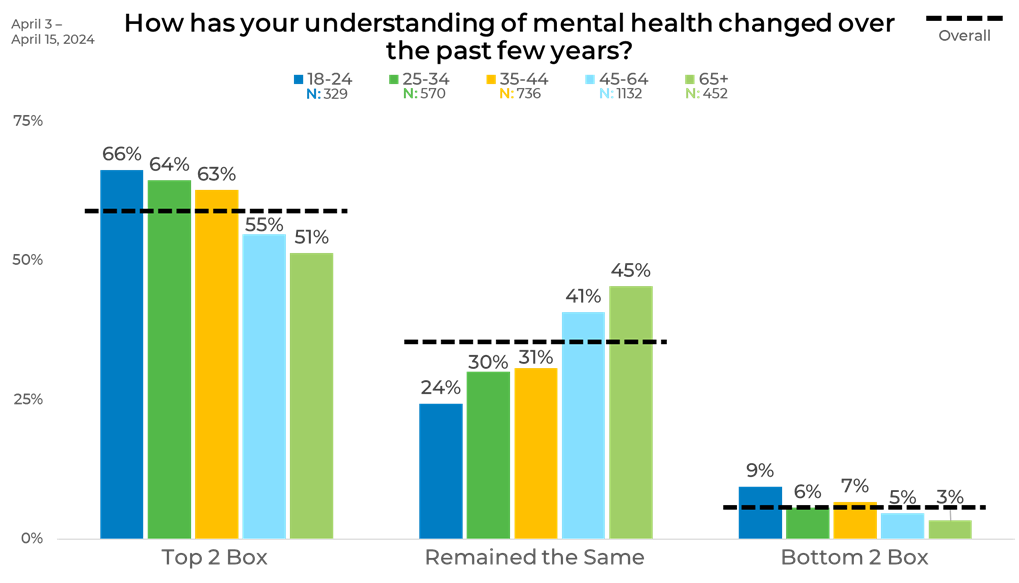
Income
It seems money really does matter—The relationship between income levels and changes in mental health understanding suggests a correlation where higher income groups report more substantial improvements in their awareness. Individuals earning $60,000-$99,999 and those making $100,000 or more both show a 64% improvement in understanding, compared to 62% for those in the $40,000-$59,999 bracket, 56% in the $20,000-$39,999 range, and 52% for those earning under $20,000. This pattern indicates that economic factors may influence access to mental health education and resources, with higher-income individuals potentially having better opportunities to enhance their understanding.
On the other hand, the data shows that lower-income individuals are more likely to report that their understanding has remained the same or even declined. For instance, 38% of those earning under $20,000 and $20,000-$39,999 feel their knowledge hasn't changed, higher than the 32-33% in the upper three income brackets. Additionally, 9% of those with an income under $20,000 perceive a decline in understanding, the highest among all groups, suggesting that economic constraints might also limit exposure to or the impact of positive changes in the mental health field.
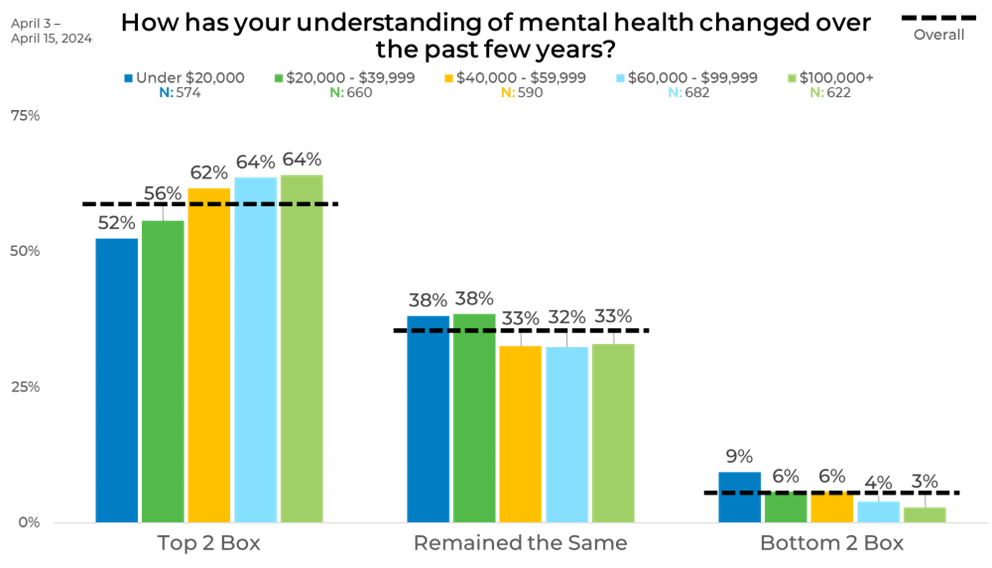
Political Affiliation
Now to niche down into our first breakdown—Political Affiliation. Democrats report the highest increase in understanding, with 65% noting improvement, followed by Republicans at 59%, and Independents at 55%.
In terms of perceptions remaining the same or worsening, Independents show higher rates of static understanding, at 40%, compared to 36% for Republicans and 31% for Democrats.
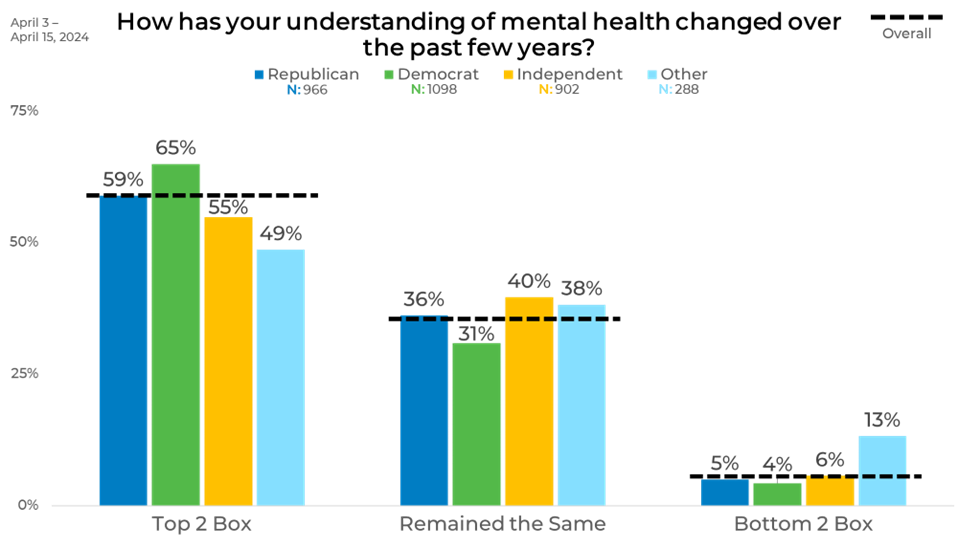
Panels
This data represents the different panels that participated in the research. In examining the differences in mental health understanding across the various panels, Panel E stands out with a notably higher improvement, where 68% of respondents reported enhanced understanding. This contrasts significantly with Panel P, which sees the least improvement at only 51%. This marked discrepancy highlights a gap between the panels, suggesting that factors such as outreach, information dissemination, or participant demographics might significantly influence the effectiveness of mental health education efforts.
Further emphasizing the contrast, Panel P also reports the highest percentage of respondents whose understanding has remained the same, at 41%. In comparison, Panel E has the lowest in this category, at just 27%, underscoring its dynamic shift in awareness. The Bottom 2 Box results further accentuate the disparity, with both Panel A and P showing higher percentages of decreased understanding at 7%, compared to just 5% in Panels C, D, and E.
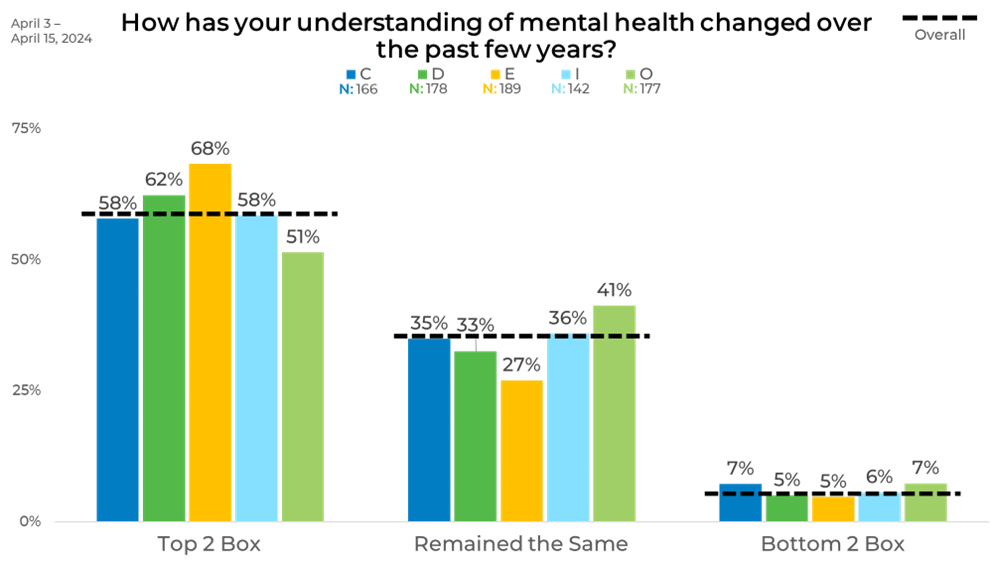
This visual is just a testament to how important quality data sampling can be. The discrepancies between the different panels above can be detrimental to a business decision.
At EMI we prioritize strategically blending sample sources to balance demographics as well as behaviors and attitudes to ensure that we provide the most representative and accurate data.
Download The Sample Landscape: 2024 Edition to better understand how panels differ from one another and how they impact your data.

